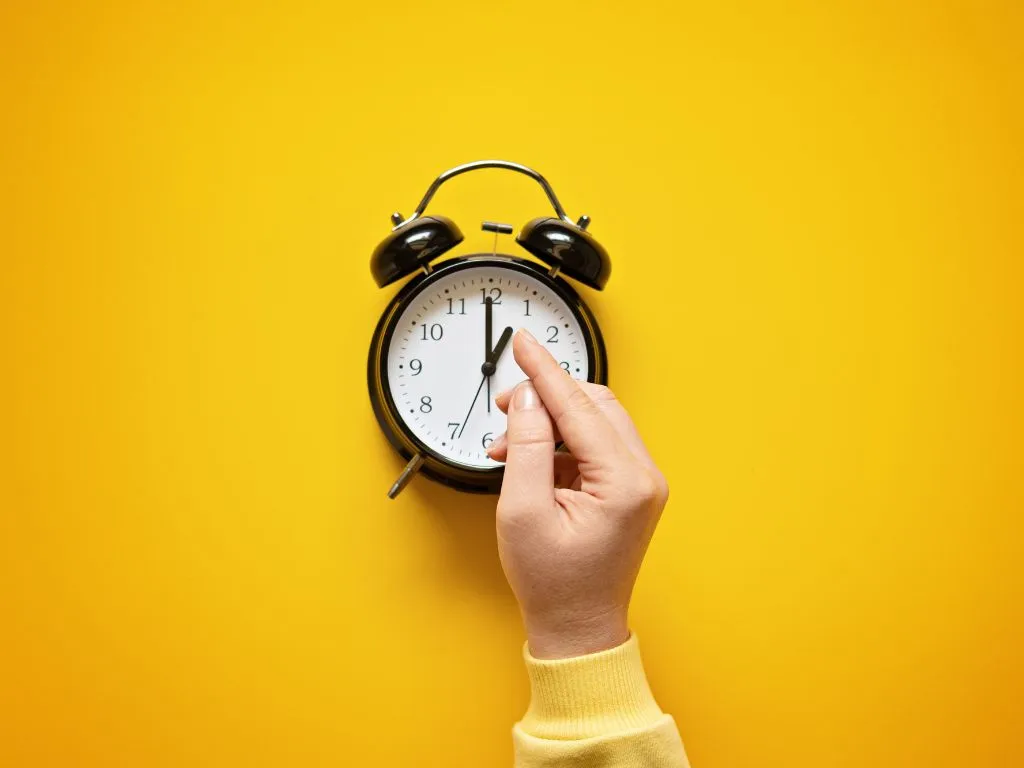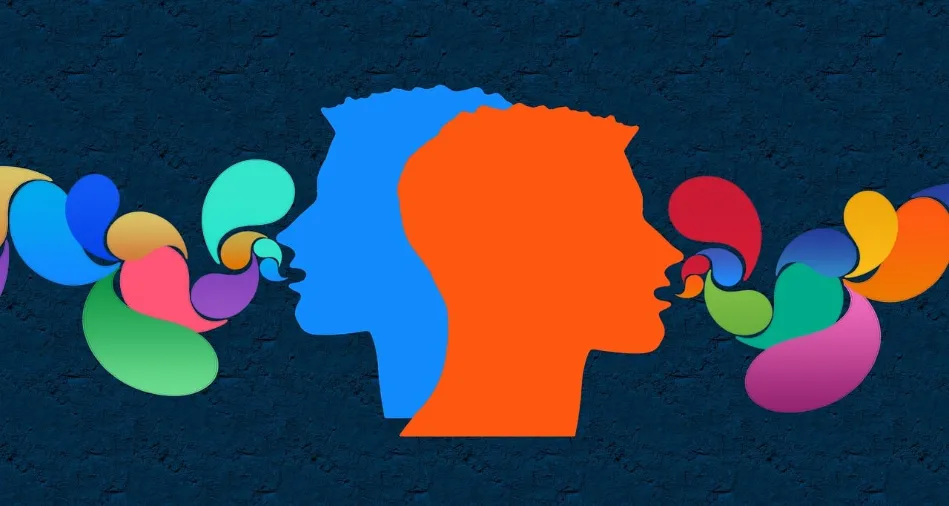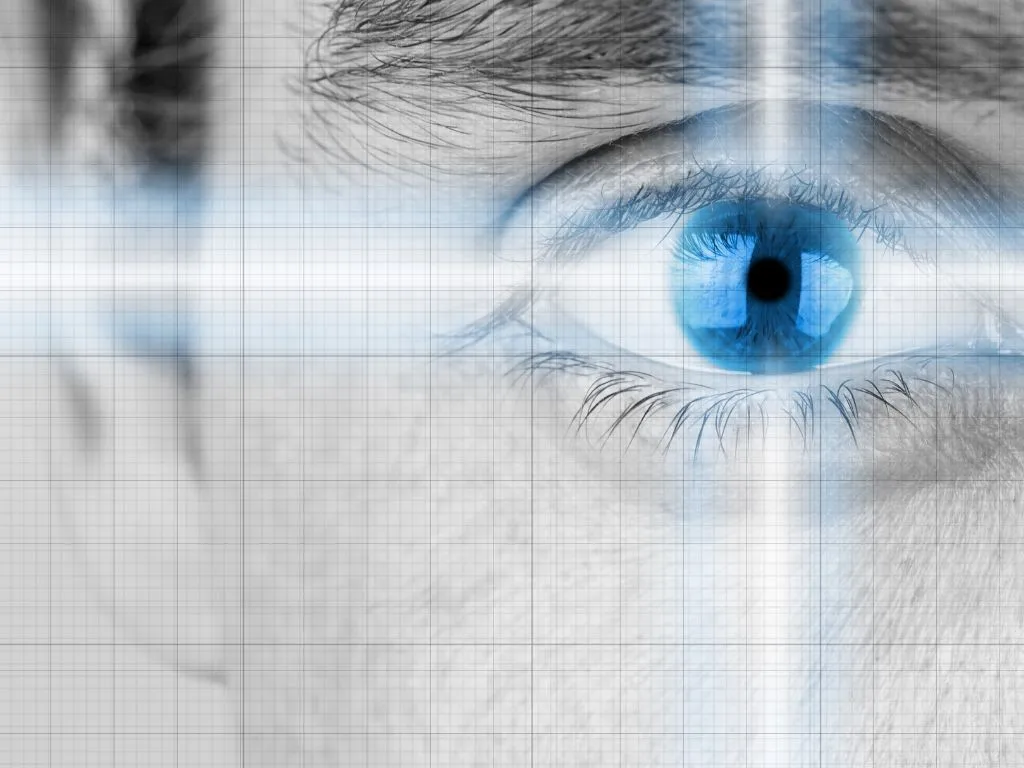[read-time]

Daylight Saving Time (DST) is a practice that involves adjusting the clocks forward by one hour in the spring and back again in the autumn. The primary objective of this biannual clock change is to make better use of daylight during the longer days of spring and summer.
The concept was first proposed by Benjamin Franklin in 1784, though it was not widely adopted until the early 20th century. During World War I, many countries implemented DST to conserve fuel by making better use of natural daylight, thereby lessening reliance on artificial lighting. The practice saw a resurgence during World War II for similar reasons.
The transition into DST typically occurs in March, when clocks are set forward by one hour, resulting in longer daylight during evening hours. Conversely, in November, clocks are reverted back to standard time. The idea behind this adjustment is to extend the period of daylight for outdoor activities in the evening, allowing individuals to enjoy more time outside after work or school, which can contribute positively to their mood and overall well-being.
Moreover, proponents of daylight saving time argue that it offers various benefits beyond maximizing daylight hours. These benefits include potential reductions in energy consumption, decreases in traffic accidents due to increased visibility, and opportunities for enhanced economic activity driven by extended daylight.
However, it is worth noting that the effectiveness and necessity of DST have been the subject of debate and scrutiny in recent years, with some regions opting to abolish the practice altogether. Despite the controversies, Daylight Saving Time remains a significant global phenomenon impacting various aspects of life, including mood, productivity, and energy usage.
The Science Behind Mood Changes
The transition into and out of daylight saving time (DST) can have profound effects on individuals’ mood and emotional well-being. Research indicates that alterations in light exposure during these transitions significantly influence psychological and physiological responses. The primary mechanism involves the body’s circadian rhythms, which are heavily influenced by light. These rhythms regulate sleep-wake cycles, hormone release, and other vital bodily functions, making them crucial for mental health.
Studies have shown that the sudden change in time can lead to sleep disruption. For example, when clocks spring forward, many people experience a loss of sleep due to an earlier wake-up time. Lack of adequate sleep can result in increased irritability, reduced cognitive function, and a predisposition to mood disorders such as depression and anxiety. Conversely, the transition back to standard time may introduce a sense of relief for some, as individuals can reclaim a more regular sleep schedule.
Emophilia and Personality Color Traits: The Fascinating Connection Between Them
[read-time] Emophilia meaning: What is it and what does it mean? Emophilia, a term derived from the Greek word “emophilia,” meaning “love…
The Personality Color Assessment & The OCEAN Model (Big 5
[read-time] This article delves into how our personality color assessment aligns with the OCEAN Model – The Big 5 Personality Traits…
Personality Color Assessment – What Exactly is it and Why
In this article you’ll learn 5 vital benefits of personality color assessments!…
The 5 Love Languages & The Color Assessment: The Real
[read-time] Table of ContentsThe Rainbow of the Personality Color AssessmentA Groundbreaking ConceptThe Five Love Languages: A Universal Blueprint for ConnectionThe Enduring…
Welcome to the ChromaLife Blog!
[read-time] Welcome to the ChromaLife Personality Color Assessment blog: where every hue tells a story! Are you ready to dive into the…
8 Morning Habits of Highly Successful People You Can Adopt
What exactly do these high achievers do in those early hours that sets them apart? And more importantly, how can…
Are Personality Changes Possible? The Science Says Yes
Personality change, is it possible? We can often wonder if we’re stuck with the personality we’re born with or if…
The Hidden Dangers of Flow State: 2 Warning Signs You’re
Flow state is an intriguing phenomenon. Have you ever been so engrossed in an activity that time seems to stand…
Discover the Magic of Mirror Neurons! Stop Missing Out on
[read-time] Mirror neurons is a remarkable discovery in the fascinating world of neuroscience. These specialized brain cells play a pivotal role…
The Domino Effect in psychology refers to the cascading impact
[read-time] The Domino Effect in psychology refers to the cascading impact of one behavior, thought, or action leading to a chain…
Uncovering Social Desirability Bias in AI Personality Tests: The Surprising
An intriguing area of study of AI involves social desirability bias when administering personality tests to large language models (LLMs)…
Moreover, exposure to natural light is intrinsically linked to mood regulation. During the darker months of winter, the lack of sunlight can lead to Seasonal Affective Disorder (SAD), a form of depression triggered by seasonal changes. The introduction of longer daylight hours that accompanies DST can improve mood by increasing the amount of sunlight individuals receive, thus promoting serotonin production—a neurotransmitter associated with feelings of well-being and happiness. Experts suggest that as days get longer, people may engage in more outdoor activities, which further enhances mood and reduces feelings of isolation.
While the scientific community continues to explore the relationship between daylight saving time and mood fluctuations, it is clear that these transitions can elicit various psychological responses. Understanding the effects of light exposure and maintaining appropriate sleep patterns during these periods can be pivotal for overall mental health and emotional stability.
The Seasonal Affective Disorder Connection
Daylight Saving Time (DST) initiates a transition in daylight exposure that can significantly impact mood, particularly for individuals susceptible to Seasonal Affective Disorder (SAD). SAD is a type of depression that typically occurs during specific seasons, predominantly in winter, when daylight hours are limited. As the clocks change, the shift can exacerbate the symptoms associated with SAD, including feelings of hopelessness, fatigue, and changes in sleep patterns.
The core of the issue lies in the relationship between sunlight exposure and mood regulation. Natural light plays a crucial role in the regulation of melatonin and serotonin, hormones that contribute to emotional well-being. As daylight diminishes during fall and winter months, those prone to SAD may experience a disruption in these hormonal levels. The transition to DST, which often entails darker mornings, can further diminish light availability, potentially worsening depressive symptoms for affected individuals.
Furthermore, research indicates that the abrupt change in time can disorient the body’s internal clock, known as the circadian rhythm. Consequently, this disorientation can induce additional stress and exacerbate depressive symptoms. Individuals with pre-existing mood disorders, particularly SAD, may experience heightened sensitivity to these changes. Their lack of adequate sunlight can lead to increased melancholy and irritability, further complicating their mental health landscape.
As communities grapple with the implications of DST, awareness of its effects on Seasonal Affective Disorder is essential. The connection between reduced daylight and increased depressive symptoms necessitates strategies to mitigate such effects, including intentional exposure to natural light and the incorporation of light therapy. Addressing the challenges posed by DST may provide individuals with more stable mental health during the darker months.
Public Perception of Daylight Saving Time
The public perception of Daylight Saving Time (DST) has been a subject of considerable debate and varying opinions across different demographics. A significant number of surveys and studies conducted over the years indicate a divergence in sentiments toward the implementation of this time adjustment. While some individuals appreciate the extended daylight hours provided in the evening during spring and summer, others find the disruption to their daily routines to be problematic.
Research suggests that attitudes towards DST may vary based on geographical location, age, and lifestyle factors. For instance, residents in northern climates often express greater support for the clock change, as longer evenings can mitigate the effects of extended darkness in winter months. Conversely, people living in southern regions may see less of a benefit, leading to more critical views toward the practice. In a survey conducted in the United States, over 60% of respondents expressed a desire to abolish DST, illustrating a notable trend against the tradition.
Age also influences perceptions, with younger individuals generally displaying more ambivalence towards daylight saving adjustments, while older generations tend to express nostalgia for the longer daylight hours. A study highlighted that working professionals often voice frustration over the disruptions to their sleep patterns and productivity, particularly during the transition periods when clocks are adjusted. Notably, parents of school-age children frequently report concerns about child safety and well-being, as the time shifts can interfere with school schedules and outdoor activities.
Overall, public perception of Daylight Saving Time remains mixed, with ongoing discussions about its effectiveness and relevance in contemporary society. The variation in attitudes underscores the need for continued discourse, especially as modern lifestyles evolve and the impacts of such time changes become increasingly scrutinized. In conclusion, examining these diverse attitudes contributes to a better understanding of how DST resonates with different populations around the globe.
Health Implications of Time Changes
The biannual transition to and from Daylight Saving Time (DST) has been a topic of considerable scrutiny, particularly in relation to its health implications. Research indicates that the shift in time can lead to significant sleep disruption, as individuals struggle to adjust their internal clocks. Such disruptions are not merely a matter of feeling tired; they can have far-reaching consequences for overall health. A study published in the American Journal of Cardiology found a noticeable increase in heart attack incidents in the days following the spring forward, highlighting a concerning relationship between time changes and cardiovascular events.
Moreover, the correlation between DST transitions and an uptick in strokes has also been documented. According to findings from the Journal of Stroke, there is a significant spike in stroke cases during the week after the clocks are adjusted. These health risks extend beyond heart health; researchers have noted increased incidences of accidents. The National Highway Traffic Safety Administration reported that the Monday following the spring clock change sees a rise in both vehicular accidents and workplace injuries, likely due to impaired sleep and cognitive functioning.
Mood and productivity can also be adversely affected by these abrupt changes. Sleep deprivation often translates to mood disorders, with instances of depression and anxiety reportedly increasing after the time change. A disrupted circadian rhythm can inhibit an individual’s ability to concentrate, thereby reducing productivity at work and impacting quality of life. Overall, the health implications associated with the biannual shifts in time underscore the need for greater awareness and perhaps reevaluation of the practice of Daylight Saving Time. In conclusion, the negative effects on sleep, increased risk of cardiovascular events, and mood disturbances associated with the clock changes merit serious consideration for public health.
Countries That Observe Daylight Saving Time
Daylight Saving Time (DST) is a practice adopted by various countries to make better use of daylight during the longer days of summer. The origins of DST can be traced back to Benjamin Franklin’s suggestion in 1784, but it was not widely implemented until the 20th century. The energy crisis during World War I and II further accelerated its adoption, as many governments sought ways to conserve energy.
Currently, many regions worldwide observe daylight saving time, particularly in Europe and North America. In the European Union, for instance, most countries shift their clocks forward an hour in the spring, typically in March, and revert to standard time in late October. Nations such as Germany, France, and the United Kingdom have a long-standing history of this practice, as it was initially introduced to save fuel and energy.
In North America, the United States and Canada also observe DST, with the clocks moving forward an hour in March and back in November. However, not all regions participate. For example, Arizona and Hawaii in the U.S. have chosen to opt out of this practice, primarily due to their favorable climates and the minimal benefit from altered daylight hours.
Countries in the Southern Hemisphere, such as New Zealand and parts of Australia, also participate in DST, although their timing of the clock adjustments occurs during their summer months. It is noteworthy that some nations, including Japan and most of Africa and Asia, do not observe daylight saving time at all. This decision often stems from geographical and cultural factors that deem the initiative unnecessary.
In conclusion, daylight saving time is a varied practice observed differently across countries and regions, with a range of historical, cultural, and geographical influences dictating its implementation or rejection. Understanding these factors provides insights into the global diversity of time management practices.
Daylight Saving Time Controversies
The implementation of Daylight Saving Time (DST) has stirred considerable debate among policymakers, health experts, and the general public. Proponents of DST argue that it leads to energy savings by extending evening daylight, thus reducing the need for artificial lighting and potentially lowering electricity consumption. A study conducted in 2008 suggested that DST could save about 0.5% of daily electricity consumption, reinforcing the argument that longer daylight hours contribute to a decrease in energy use.
On the other hand, critics of DST contend that the anticipated energy savings are minimal or even non-existent in modern society, where energy consumption patterns have evolved. They emphasize that the shift in time can disrupt people’s circadian rhythms, leading to various health issues, including sleep disturbances, increased stress levels, and a heightened risk of cardiovascular problems. Medical studies have shown a spike in heart attacks in the days following the time change, igniting a discussion about whether the potential benefits of DST outweigh its adverse health impacts.
Economic implications also play a critical role in the argument surrounding daylight saving time. While some studies indicate that extended daylight in the evening promotes consumer spending, particularly in retail and leisure activities, other analyses suggest that the disruptions caused by time changes can negatively impact productivity. Consequently, businesses in industries that rely heavily on consistent schedules, such as agriculture and transportation, have voiced concerns over the unpredictability created by the biannual clock changes.
Recent legislative efforts have emerged to address these tensions, with numerous jurisdictions proposing to abolish or maintain DST. Some areas seek to adopt a permanent standard time, favoring stability over the biannual adjustments. As the discussion surrounding daylight saving time evolves, it is clear that the variety of arguments reflects the complexity of balancing social, economic, and health needs in modern society.
Strategies to Cope with Time Changes
Adapting to the shifts brought about by daylight saving time can be challenging for many individuals. However, there are several strategies that can be employed to mitigate mood changes and enhance overall mental well-being during this transition. One effective approach involves gradually adjusting sleep schedules prior to the actual clock change. By shifting bedtime and wake time by 15-30 minutes in the days leading up to the time change, individuals can help their bodies adapt more smoothly, reducing the shock that often accompanies a one-hour shift.
Another beneficial strategy is the incorporation of light therapy. Exposure to natural light in the morning can improve mood and assist in regulating the body’s circadian rhythms. When daylight saving time begins, individuals can spend time outdoors shortly after waking or invest in a light therapy box, especially during the darker months. This practice can alleviate feelings of fatigue and lethargy, promoting a sense of alertness and well-being.
Additionally, prioritizing self-care practices can significantly impact how one copes with changes in time perception. Engaging in regular physical activity not only strengthens the body but also releases endorphins, which can elevate mood levels. Mindfulness practices, such as meditation and yoga, are also effective in cultivating mental clarity and emotional stability. These techniques foster resilience against stressors that may arise due to the disruption of routine caused by daylight saving time.
Furthermore, maintaining a balanced diet and staying hydrated can greatly influence mood. Nutritional choices that include a variety of fruits, vegetables, whole grains, and proteins can enhance energy levels and overall cognitive function. Lastly, seeking social support from friends and family during this transition can provide comfort and reassurance, as sharing experiences often leads to collective coping and understanding of mood fluctuations.
The Takeaway
Reevaluating Daylight Saving Time
The discussions around Daylight Saving Time (DST) highlight the complex interplay between its intended benefits and the potential drawbacks experienced by individuals and communities. As we have explored, the initial aim of DST was to optimize daylight use, which theoretically could lead to increased energy savings and enhanced productivity. However, empirical evidence suggests that the benefits of energy conservation may not be as significant as once thought, leading many to question the effectiveness of this practice in today’s energy landscape.
Moreover, research indicates that the transition into and out of DST can significantly impact mood and mental health. The abrupt shift in sleep patterns and daily routines can lead to an increase in instances of anxiety, depression, and even a temporary spike in accidents. These adverse effects raise important questions about the overall utility of DST, prompting consideration of whether the disruption to individual well-being outweighs the intended benefits of extended daylight hours.
As nations around the world grapple with these issues, it becomes evident that a reevaluation of DST is essential. Countries are already taking steps to reassess their adherence to this practice, with some opting for permanent standard time or abolishing DST altogether. The need for ongoing research and dialogue remains critical, as additional studies are required to better understand the long-term effects of daylight saving time on various aspects of life, including health, productivity, and economic factors.
In summary, the decision surrounding Daylight Saving Time is multifaceted. It necessitates careful consideration of evidence from diverse perspectives, alongside a commitment to promoting well-being in the modern era. As society continues to evolve, adapting our approach to timekeeping may very well be a step towards enhancing the quality of life for all. Continuous examination and open discussions in this domain will ultimately guide us toward a more informed position on the relevance of DST in contemporary society.
Are you ready to dive into the world of personality color traits? To discover what your specific color trait is, take our personality color assessment today.
Armed with this knowledge you’ll learn how to build on your strengths; work on your weaknesses; and develop closer more meaningful relationships with those around you.
Emotional Intelligence and Personality Color Traits: 9 Intriguing Connections!
[read-time] A novel approach has emerged, linking Emotional intelligence, personality traits and color psychology. This innovative perspective offers fresh insights into…
5 Secret Tips for Identifying Personality Color Traits in Others
[read-time] The concept of personality color traits is rooted in the idea that individuals can be categorized based on the colors…
Smartphones Undermine Social Connectedness More in Men Than Women: 6
[read-time] Smartphones and their role in society In the modern era, smartphones have become abundantly integrated into our daily lives. These powerful…
Emophilia and Personality Color Traits: The Fascinating Connection Between Them
[read-time] Emophilia meaning: What is it and what does it mean? Emophilia, a term derived from the Greek word “emophilia,” meaning “love…
The Big Five Personality Traits – 5 Intriguing Gender Differences
[read-time] Gender differences in personality traits The Big Five personality Traits and Gender differences in personality trait have often sparked countless debates…















